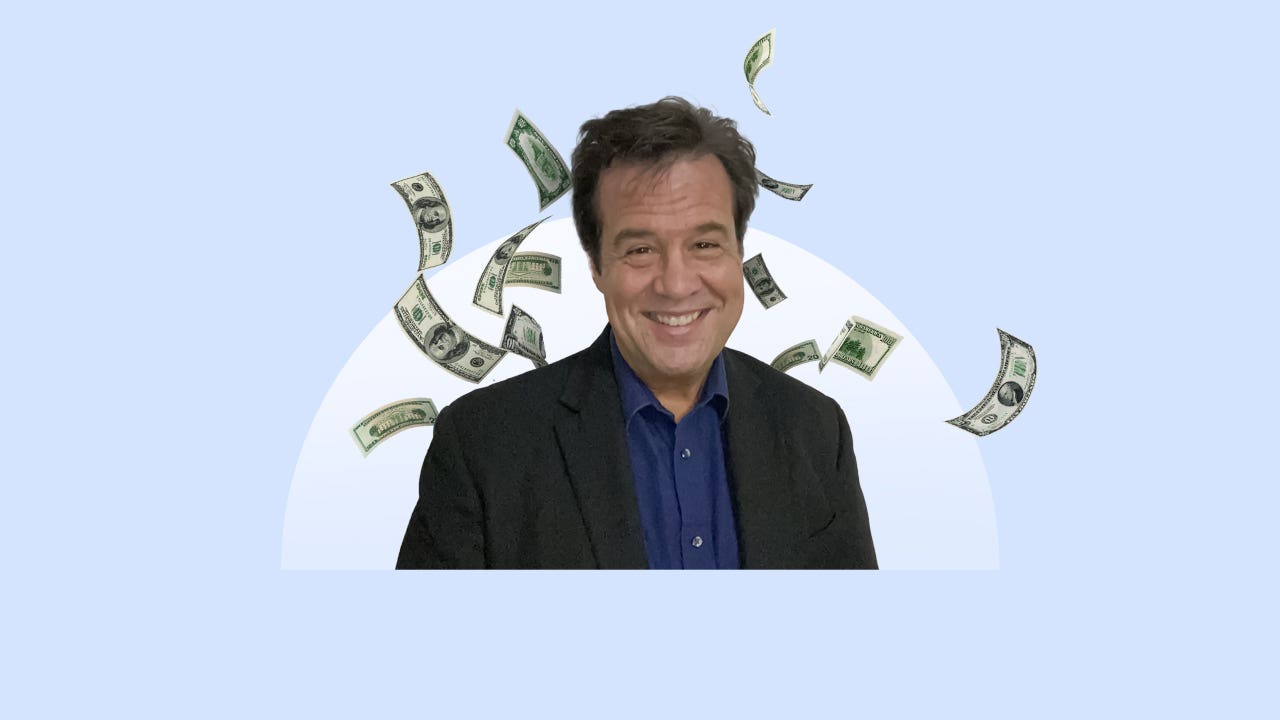I sold loans for 25 years — here are the inside secrets to getting the best offer

Before I was a personal finance writer, I sold mortgages for a living. For nearly 25 years, I was trained by national sales coaches, local bank sales conferences and mortgage industry conventions.
When you’re shopping for any type of loan — be it a mortgage, personal loan or auto loan — a sales technique is working behind the scenes. In my experience, salespeople fit into three categories: the closer, the razzle-dazzler and the educator.
I had a front-row seat to the devastating effects of the predatory use of closer and razzle-dazzle tactics during the housing meltdown. They were used to sell unaffordable mortgage loan products, destroying the homeownership dreams of hundreds of thousands of people who fell for them.
Since then, I’ve done my best to educate people about how to spot common loan sales spins to avoid taking on bad debt.
How to spot the three most common sale techniques — and two to look out for
I am not a born salesman. My idol in my formative business years was George Bayley in “It’s a Wonderful Life,” who was more an idealist than a salesman. Although I became a top producer, I found a passion for teaching financial literacy after volunteering at a foreclosure prevention task force.
Here, I learned it was lack of awareness of common sales techniques that led many people I counseled to lose their homes. Knowing loan sales tactics before you apply for a loan could keep you from taking on financially unhealthy debt.
The closer
Closers are trained to get you to sign paperwork quickly and close as many deals as possible. A closer is coached to counter objections, zone in on emotional cues and create a sense of urgency. The pitch is designed to convince you the loan is a need, not a want.
About 10 years into my mortgage career, I was accepted into a high-performance mortgage sales coaching program. Rather than selling the best rates, I sold the best service and the fastest turnaround times.
I offered rates cloaked in FOMO language. Fear often motivates borrowers to decide on the spot. “You might find a lower rate online, but will that lender be able to close your purchase on time?” Or, “I would hate to see you pay extension fees or nonrefundable earnest money if you close late.”
As a closer, control is essential. Status texts, emails and phone calls are constant. The key to my approach was to be top of mind during every step of a transaction, until it funded and I could log my commission.
Where you’re likely to encounter a closer sales pitch
I found that the highest-pressure closer sales tactics target financially troubled borrowers. Personal loan websites promise quick and easy money to ease the emotional stress of getting a loan with bad credit.
- Bad credit loan companies. The sales message is simple: We lend money fast even if your credit is awful. The word “easy” or “simple” is peppered in the funnel to appeal to borrowers who might feel intimidated by other companies.
- Emergency loan lenders. With so many Americans living paycheck to paycheck, it’s not surprising that emergency loan lenders close so many loans. The more urgent the situation, the less likely you are to think about the terms of the money you just borrowed.
- Payday or title loan companies. If gas is running low or the cupboards are bare in between paychecks, those fast cash signs are meant to be a friendly neighborhood invitation to their 24/7 lending offices.
Closer language
| Quick money | Emotional pull | Easy cash access |
|---|---|---|
| Fast funding | Get money to make things happen | Loans made easy |
| Swift | Empower your plans | We accept everyone |
| One hour after closing | Help for anything life throws your way | Loans with no paperwork |
| Quick access to the money | Do amazing things | Uncomplicated |
The razzle-dazzler
For many years, I worked for large regional mortgage banking companies. Their marketing departments often produced custom websites, personalized video marketing and social media content to spread the word that I was the best loan officer ever.
This pitch involved creating an “experience” rather than just a generic, high-pressure closer pitch. I personalized my PowerPoints with soundtracks, and visions of happy families in their dream homes filled the screen.
I shared impressive stats about my company’s size and the number of borrowers they’d helped. I wrapped it up with emotional testimonials from my clients. Throughout each section, I’d keep the audience engaged with questions like, “How does that sound to you?” or “Does that make sense?”
My razzle-dazzler goal was to tug at the prospects’ heartstrings and establish trust that my company was the best match for their borrowing needs.
How you’re likely to encounter the razzle-dazzler
My razzle-dazzler sales pitches for mortgages were usually part of referral-only relationships with real estate agents, networking meetings or part of homebuyer workshops I hosted. The razzle-dazzle can look slightly different for loans that are typically purchased online, such as personal loans.
- Flashy websites with goal-oriented language. Crisp graphics and people in action are staples of the razzle-dazzle personal loan sales approach. You’ll see people ready to tackle a home improvement, smiling at their new debt consolidation budget or painting a kid’s room.
- Accolades are up top. You may see “as seen on” major media outlets or awards given by online editorial staff highlighting the lender’s strengths. Testimonials are common to show how peers’ lives have been transformed by the lender’s products. There’s usually a statistic about how many millions — or billions of dollars the lender has loaned and how many people have been helped.
- Rates are further down on the page. The razzle-dazzler lender doesn’t reveal rates and terms at first. You’ll see them after you’ve had plenty of time to read testimonials of life-changing customer experiences.
Razzle-dazzler signs
| Website flash | Recognition | Funding stats |
|---|---|---|
| Colorful graphics and moving banners | Awards up top | Dollar amount of money the lender has loaned |
| Interactive features like calculators | Media mentions | How many people have taken out loans at the lender |
| Happy customer photos | Testimonials | How much debt has been paid off |
The educator
I hated both the closer and razzle-dazzler sales approaches. I saw the consequences of abusing those tactics during the housing boom and bust. Although I never sold stated income or negative amortizing option ARMs, I counseled people in foreclosure prevention workshops when values crashed and those loans began defaulting.
The backstory was always the same. A fast-talking loan officer convinced them that the loan terms didn’t matter. They could just sell the house for a 20 percent (or more) profit in six months like everybody else and pay the loan off. When values plummeted and the monthly payments nearly doubled, most lost their homes.
That changed my entire approach to selling loans. I asked more questions, began taking and teaching financial literacy courses, let my customers do most of the talking and listened a lot more. For my customers to make informed decisions, I knew it was my responsibility to provide them with more context about the immediate and long-term benefits and consequences of lending products and give them more time to make a final decision.
Where you’re likely to encounter the educator
You will need to read between the lines to find information on a lender’s website that is truly educational. I’d recommend balancing the lender’s education content with a look at marketplace lender content. The educator’s emphasis is usually more on your overall financial health than a hard sell on rates and costs.
- Emphasis on lifetime customers and customer service access. The educational lender is interested in repeat and referral business. They may not have the lowest rates, but they often offer extra financial tools to help you pay loans off faster, save more and budget better so you don’t resort to debt use as often.
- Lender educational content. You’ll have to click on a few tabs to get there in most cases, but you’ll find educational content in the blog or frequently asked question sections of lender websites. I’ve also reviewed several personal loan lenders’ FAQ sections, and some offer questions and answers that reflect an educator’s spirit about the financial pros and cons of the company’s loans.
- Marketplace educational content. I didn’t know anything about marketplace lending until I started writing about it six years ago. The idea is simple: You get information about multiple lenders or loan products from one place, rather than doing all the legwork and research on your own. The best part: you get objective advice about a loan product or individual lender without the sales spin.
Educator signs
| Customer-service centric | Educational tools | Educational content |
|---|---|---|
| Lifetime customer focus | Cost breakeven calculators | Pros and cons prominently displayed |
| Phone, email and chat access 7 days a week | Credit score improvement programs | Firsthand experience to give a peer perspective |
| Rate discounts for on-time payments | Offer access to certified credit counselors | Offers multiple solutions for consumer’s borrowing needs |
How to push back against sales tactics
Lending is a profit-driven business. At some point, the person you’re talking to may ask a closer question, but it should be after all of your questions are answered.
Be clear on what you want before you apply for a loan
The best way to fall for any sales pitch is to let someone tell you what you need, because you really haven’t thought it through. Lender’s don’t consider utility bills, cell phone cost or how much you eat out or spend on groceries when they approve you.
If you don’t check your budget to see how much you can afford, you’ll probably borrow more than you need. Overborrowing can lead to financial stress and affect your quality of life — make sure to calculate how much the loan is going to cost you.
Don’t fall for freebies
Nothing is free in the lending world. It drove me crazy in my mortgage-selling days when homebuilders offered tens of thousands of dollars of free upgrades to use their mortgage companies. The catch: You almost always paid a higher rate for the 30-year term of the preferred lender’s loan in exchange for these “freebies.”
Learn before you borrow
Soak up as much information as you can about the loan you need. Read up on the pros and cons of a variety of different companies before you ever apply, and compare interest rates. As the CFPB says, “Know before you owe.”
Why we ask for feedback Your feedback helps us improve our content and services. It takes less than a minute to complete.
Your responses are anonymous and will only be used for improving our website.
You may also like

How to choose the best bad credit loan company

How to spot personal loan scams and protect your finances




